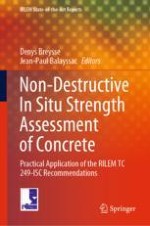2021 | OriginalPaper | Chapter
11. Model Identification and Calibration
Authors : Zoubir Mehdi Sbartaï, Maitham Alwash, Denys Breysse, Arlindo Gonçalves, Michael Grantham, Xavier Romão, Jean-Paul Balayssac
Published in: Non-Destructive In Situ Strength Assessment of Concrete
Publisher: Springer International Publishing
Activate our intelligent search to find suitable subject content or patents.
Select sections of text to find matching patents with Artificial Intelligence. powered by
Select sections of text to find additional relevant content using AI-assisted search. powered by
